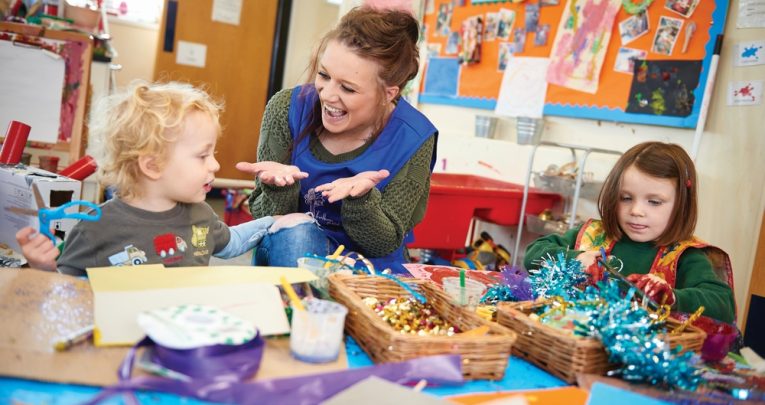Is Your Early Years Setting Actually Helping Children To Learn – Or Can It Do Better?

Many early years settings have got the wrong end of the stick when it comes to the Characteristics of Effective Learning, says Kirstine Beeley – here’s what you really need to know…

With the introduction of the revised EYFS [PDF] in 2014 and the subsequent Development Matters support materials [PDF], much focus has fallen on evidencing best practice in early years for parents, outside agencies and, of course, Ofsted. But some confusion reigns concerning the Characteristics of Effective Learning (CoEL) and how to evidence these. Many settings use the guidance to help monitor progress and to help in planning children’s next steps for learning, but a growing number of settings are wrongly using the guidance on CoEL as a tick list of what children can and cannot do. To be clear, CoEL is not the what children can do, but the how children do things and the what we need to do to ensure this happens. The mention of CoEL in the EYFS is a reminder to practitioners that for children to access learning to their highest potential, there needs to be understanding of how children learn best, with settings then looking to make sure these opportunities are provided. It is about what the practitioner should be doing, rather than the child. Explore each of the strands within CoEL and this becomes even clearer, so let’s look at each in turn.
1. Playing and Exploring
Finding out and exploring This aspect of provision is so very important – providing opportunities that stimulate natural curiosity, use all of the senses and encourage children to explore is vital to developing brains. It’s about ensuring that activities and resources hold a ‘can’t keep my hands off’ appeal and have lots of scope for children to explore resources in their own way.
It’s also about ensuring that resources are freely accessible – are they low enough and is there enough floorspace to spread out or move things around? Are children given enough time to explore without interruption? Providing inviting, exciting resources and the time to explore them is essential in any early years provision.
Playing with what they know Children take what they know and feel comfortable with as their starting point for exploring the world, particularly in our early years settings. They initially copy what they see at home within their play, so we need to make sure that what they have at home is replicated in our settings.
Do you have phones, TV remotes, magazines, food packets/tins, vacuum cleaners and dusters available for role play? Do your role play themes reflect familiar experiences? Do you have their favourite TV/book characters reflected within your small world play? Have you got a range of magazines and books featuring film and TV characters? The key to working with ‘what they know’ is practitioners knowing ‘what they know’ and what gets them interested and excited. I always recommend that settings have a chart somewhere prominent showing children’s interests, and that this is updated by both practitioners and parents regularly. What interests a child now is not what will push their buttons six weeks later – our practical resource provision needs to be constantly reviewed and revised.
Willing to ‘have a go’ This goes hand in hand with the two previous strands. Children who have lots of engaging resources and experiences based on their own personal interests are more likely to grow in confidence. They become more willing to extend their ideas and try new things if supported sensitively by practitioners.
Adults need to learn when to stand back and let children try things their way, and when to offer sensitive support without imposing their agenda on the child’s exploration. The benefits to learning need to be carefully and positively weighed up against the risks, and children given the chance to try things.
2. Active Learning
Being involved and concentrating When a child finds something she has a real interest in and is supported in her exploration, she can become totally immersed in her learning. This strand isn’t really about ‘can a child stay on task’; it’s about asking yourselves as practitioners if the activities you’re providing are really engaging your children.
Are children staying with the activity, or are they choosing to go elsewhere? If they are walking away, you need to review your provision and also watch what it is they’re choosing to go to. You can bring a child to water, but you cannot make them play! You can, however, make it an activity that’s as exciting and inviting as possible. Reflection and adaptation are key to getting children actively learning.
Keeping trying Children need a supportive, encouraging environment in which exploring their own ideas is positively encouraged; where they’re able to ask their own questions and know that the adults will help them to find the answer themselves. They need to feel that they can try something, then try it a different way, without judgement or preconceived expectations.
If their tower of blocks falls, they need to know that you will support them to build it again – bigger and better than before. Keeping trying is about adults being positive, supportive and encouraging in their interactions to build children’s confidence in their own abilities.
Enjoying achieving what they set out to do Again this is about how adults support children’s approaches to problems. Do you offer open-ended situations where children can explore their own ideas? Do you encourage the process of learning as much as you do the final product? How many times have you complimented a child’s finished painting rather than sitting alongside him as he paints and praising his choice of colour or skill with the brush?
We need to make sure that children’s success at every stage of a process is praised, rather than just the final product. Ensure that space and time are given to display and save creations to be shared with peers and parents later.
3. Creating and Thinking Critically
Having their own ideas As mentioned, it’s key to children’s confidence and learning that they are encouraged to voice their own ideas and explore their own natural curiosity with sensitive support from practitioners. Children need to know that you will help them to explore these ideas further, that you will help to extend what they’ve started and provide support to find out more.
Do your activities allow children to create and explore in their own way, or are you asking them to create to a template for your display purposes?
Making links Are your children allowed to explore and adapt their ideas? Are they allowed to revisit the activity time and again so that they can use their acquired knowledge next time in new ways? Do you as practitioners encourage them to ask questions and make connections between what they already know and what they are trying to do?
Choosing ways to do things This final strand should be an umbrella across the whole of CoEL, as far as I’m concerned. When children are given the time, space, opportunity and support to choose their own way to do things, and are encouraged to work through and solve problems along the way, they will become confident, independent individuals who are well prepared for life well beyond school. And ready for a world where having your own ideas is the key to so many careers and life opportunities.
Kirstine Beeley is an author and educational consultant; for more information, visit www.playingtolearnuk.com












